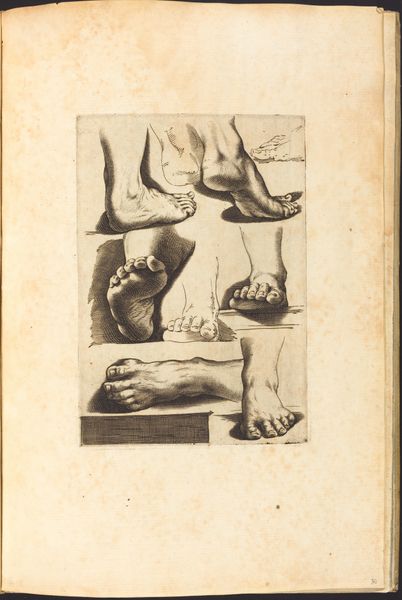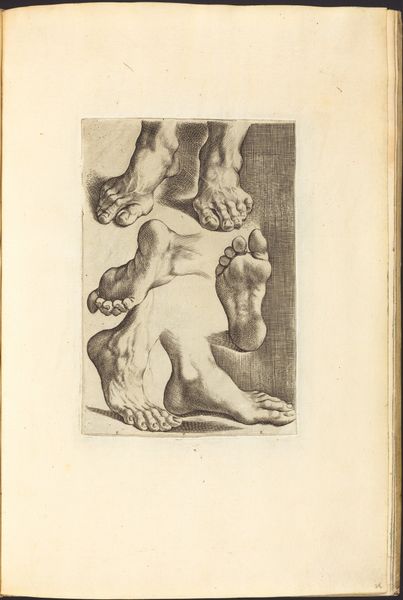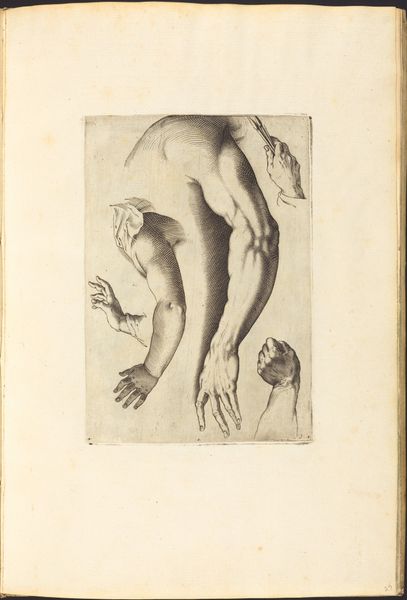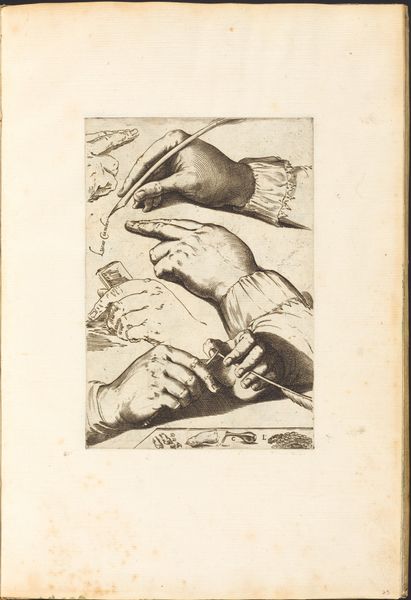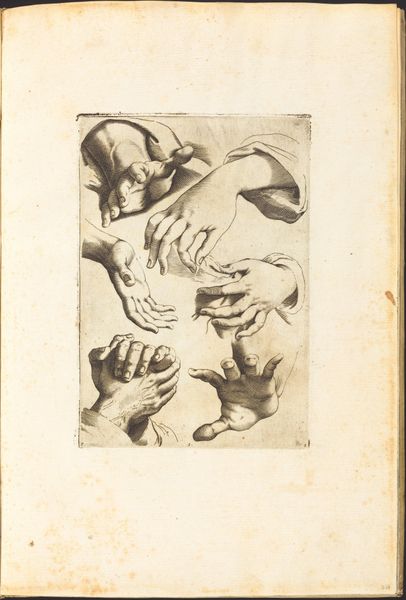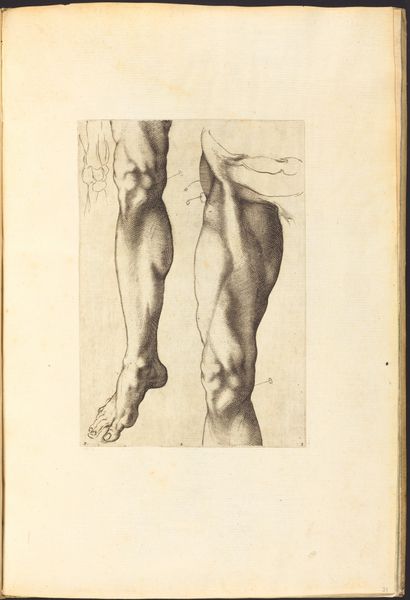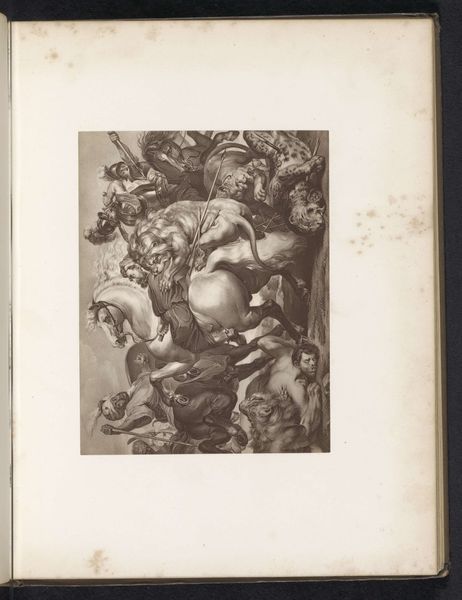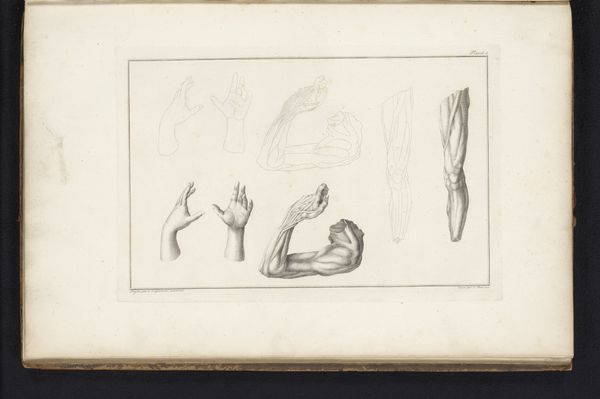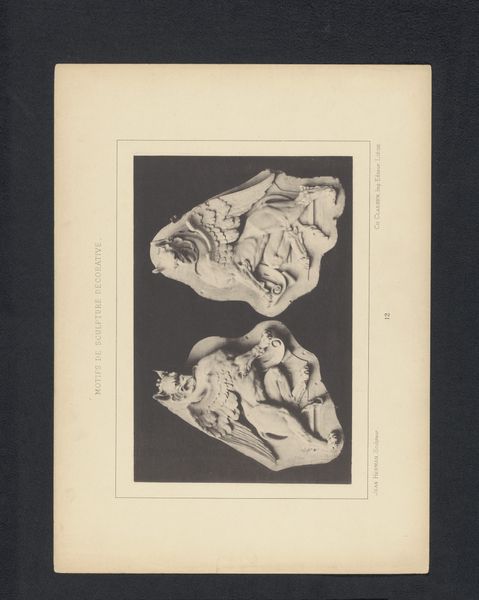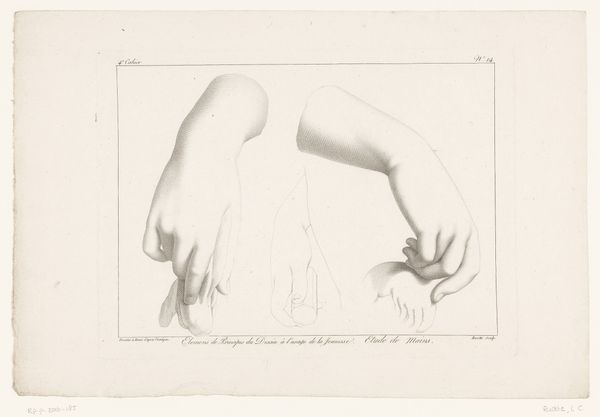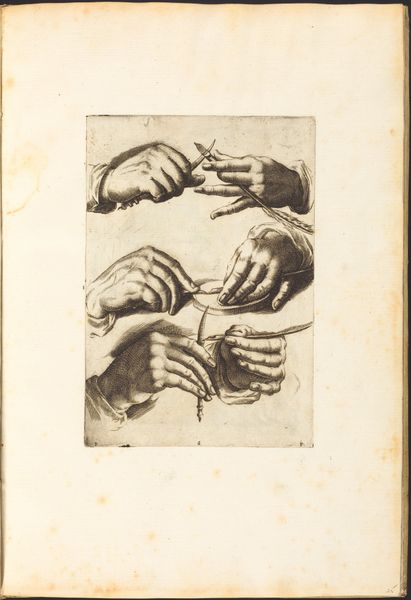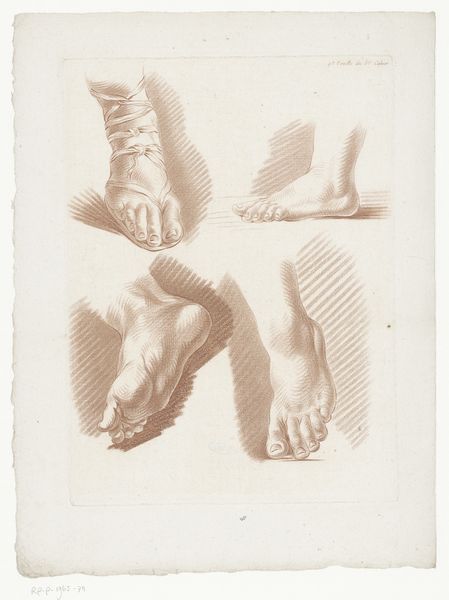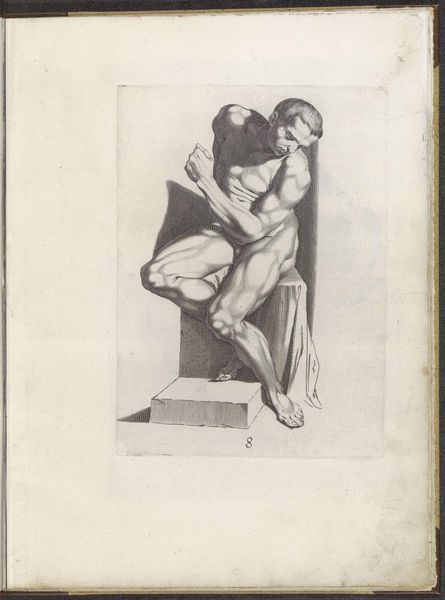
drawing, print, etching, paper
#
drawing
# print
#
etching
#
figuration
#
paper
#
academic-art
Copyright: National Gallery of Art: CC0 1.0
Editor: So, this is "Print from Drawing Book" by Luca Ciamberlano, dating from around 1610 to 1620. It’s an etching on paper, a collection of feet. It's kind of cool and creepy at the same time, like a Renaissance anatomy study, but just focused on feet. What's your take on this work? Curator: It’s interesting to consider this piece within the broader context of artistic training during that period. Prints like these, part of drawing books, served a crucial role in disseminating knowledge. They allowed artists to study anatomical forms and develop their skills even without direct access to live models or classical sculptures. Editor: So, like a study guide for artists? Curator: Exactly. The academic tradition strongly emphasized mastering human anatomy as foundational. Ciamberlano’s print demonstrates the focus on accuracy and the idealized, classical forms. We also should think about who this book was for and how it shaped artistic conventions in that moment. How did art academies leverage this kind of imagery to instill cultural values? Editor: I hadn't considered that it’s not just about skill, but also about promoting a specific artistic and even social viewpoint. Curator: Precisely! And consider the power dynamic: wealthy artists having resources that allowed them the study of anatomy, access that many people didn't have. Prints like this mediated that divide to some extent, democratizing access while also reinforcing established artistic hierarchies and values. Do you see the interplay there? Editor: Definitely. I was initially drawn to the strangeness of focusing just on feet. Now I'm thinking about how it also represents access to knowledge and the power structures within the art world. Curator: Indeed. This "Print from Drawing Book" represents not only anatomical study, but also the circulation of ideas and the reinforcement of academic norms during a fascinating period of art history. Editor: Well, this was certainly enlightening, approaching it from that historical and social angle!
Comments
No comments
Be the first to comment and join the conversation on the ultimate creative platform.
